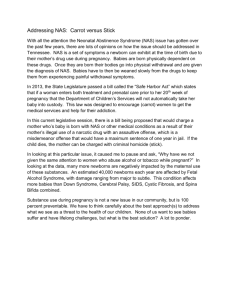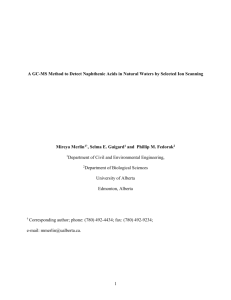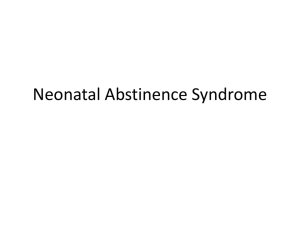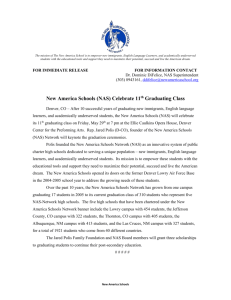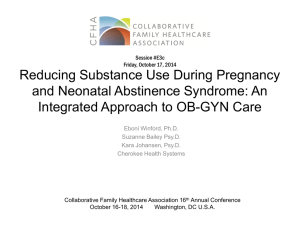Naphthenic acids (NAs) are natural constituents in many petroleum
advertisement
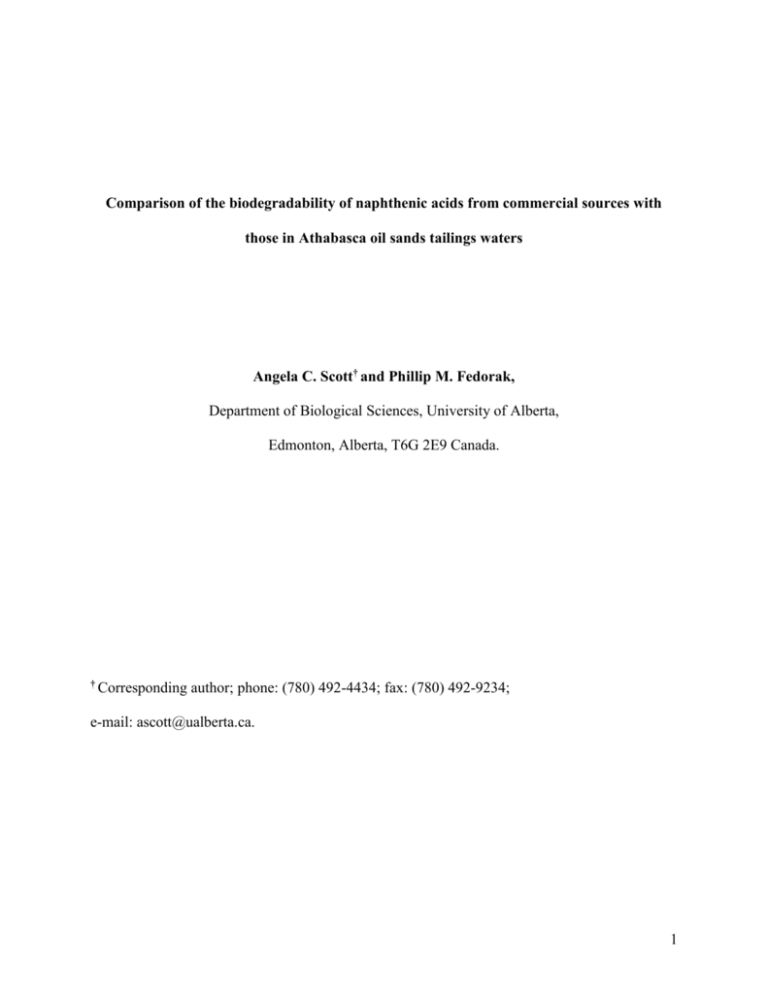
Comparison of the biodegradability of naphthenic acids from commercial sources with those in Athabasca oil sands tailings waters Angela C. Scott† and Phillip M. Fedorak, Department of Biological Sciences, University of Alberta, Edmonton, Alberta, T6G 2E9 Canada. † Corresponding author; phone: (780) 492-4434; fax: (780) 492-9234; e-mail: ascott@ualberta.ca. 1 Abstract Naphthenic acids (NAs) are natural constituents in many petroleum sources, including bitumen in the oil sands of Northern Alberta, Canada. NAs are complex mixtures of predominately alkylsubstituted cycloaliphatic carboxylic acids (containing cyclopentane and cyclohexane rings) and small amounts of acyclic acids (Brient et al. 1995). They are described by the general chemical formula CnH2n+ZO2, where n indicates the carbon number and Z is zero or a negative, even integer that specifies the hydrogen deficiency resulting from ring formation. Commercial NA preparations, obtained via extraction of petroleum distillates, have numerous applications including wood and textile preservation, as well as promoting vulcanization of rubber used to manufacture tires (Brient et al. 1995). In the Athabasca oil sands operations, bitumen extraction processes produce tailings waters that contain NAs. These waters cannot be discharged to the environment because NAs are acutely toxic to aquatic species. However, a study using laboratory cultures of microorganisms indigenous to tailings waters found evidence of detoxification following aerobic incubation with extracted oil sands NAs (Herman et al. 1994). It has also been observed that the toxic character of commercial NAs is reduced following their biodegradation in laboratory cultures (Clemente et al. 2004). Based on these findings it was hypothesized that NAs in the oil sands tailings waters would be readily biodegraded and that tailings waters could be effectively detoxified by biological treatment. The purpose of our recent studies was to characterize four commercial NAs preparations and the NAs in oil sands tailings waters from two sources, Syncrude Canada Ltd. and Suncor Energy Inc., using gas chromatography-mass spectrometry (GC-MS). These NAs were also incubated with microorganisms from the tailings waters under aerobic, laboratory conditions. Biodegradation was monitored by following changes in the NAs concentration via high- 2 performance liquid chromatography (Yen et al. 2004). This method does not resolve individual NAs but quantifies NAs based on integration of a “hump” corresponding to the NAs mixture. Similarly, the GC-MS method generates a hump-shaped total ion chromatogram (TIC) that can provide qualitative information useful for comparing NAs samples. GC-MS data can also be used to develop three-dimensional plots of ion intensity versus carbon number and Z-value (Clemente et al. 2004). NAs in the commercial preparations had lower molecular masses than the NAs in the tailings waters. Commercial NAs were biodegraded within 14 days, but only about 25% of the NAs native to the tailings waters were removed after 40-49 days. These results show that low molecular mass NAs (C ≤ 17) are more readily biodegraded than high molecular mass NAs (C ≥ 18). Moreover, the results indicate that biodegradation studies using commercial NAs alone will not accurately reflect the potential biodegradability of NAs in the oil sands tailings waters. Because of the demonstrated recalcitrance of the high molecular mass NAs in tailings waters, alternative methods, such as ozonation, are being considered for removing the toxicity associated with these compounds. We are also pursuing better analytical techniques and characterization methods in order to facilitate the study of these complex NAs mixtures. Keywords: naphthenic acids, biodegradation, toxicity reduction, tailings waters, Athabasca oil sands References: Brient, J. A., Wessner, P. J., and Doyle, M. N. 1995. Naphthenic acids. In Encyclopedia of Chemical Technology, 4th ed.; Kroschwitz, J. I., Ed.; John Wiley&Sons: NewYork, 1995; Vol. 16, pp 1017-1029. 3 Clemente, J. S., MacKinnon, M. D., and Fedorak, P. M. 2004. Aerobic biodegradation of two commercial naphthenic acids preparations. Environmental Science and Technology, 38: 10091016. Herman, D. C., Fedorak, P. M., MacKinnon, M., and Costerton, J. W. 1994. Biodegradation of naphthenic acids by microbial populations indigenous to oil sands tailings. Canadian Journal of Microbiology, 40: 467-477. Yen, T.-W., Marsh, W. P., MacKinnon, M. D., and Fedorak, P. M. 2004. Measuring naphthenic acids concentrations in aqueous environmental samples by liquid chromatography. Journal of Chromatography, A, 1033: 83-90. 4
